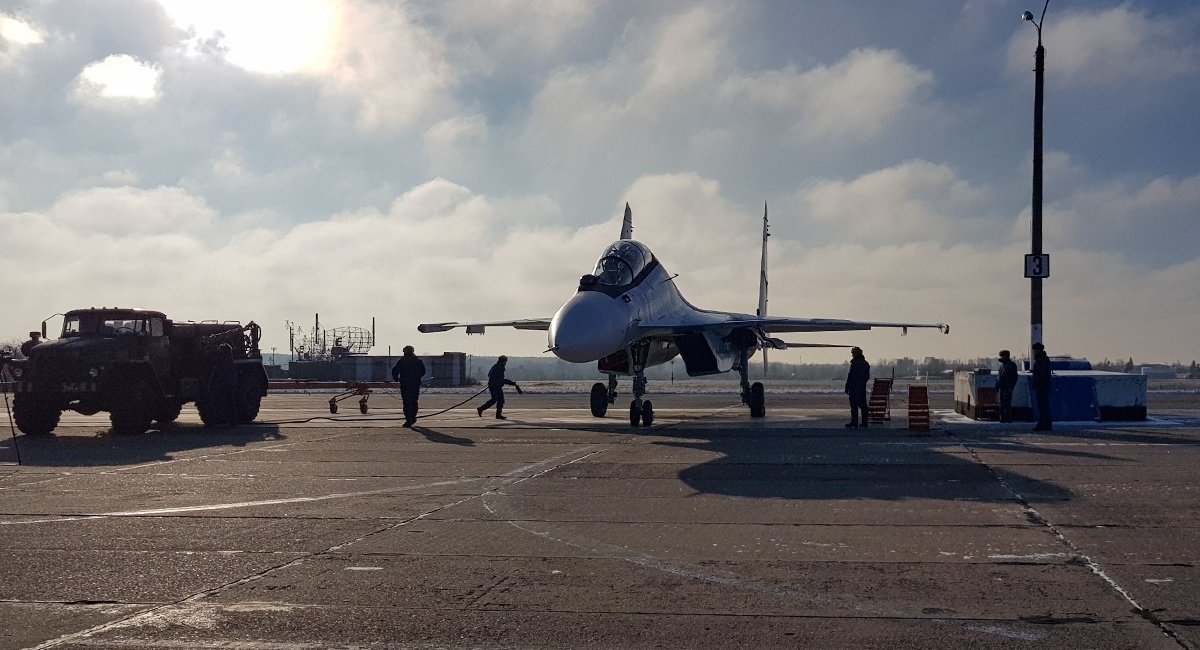In what appears to be another significant blow to the Russian Air Force, Ukraine has claimed to have struck and damaged five Russian fighter jets using a wave of kamikaze drones at Kursk Airfield during the intervening night of August 26-27.
The strike, seemingly employing over 15 drones, was executed by the Security Service of Ukraine (SSU), a source in Kyiv’s security service told Ukrainian media on August 27.
According to the reports, drones targeted four Su-30 aircraft and one MiG-29 at the airbase. Additionally, they caused damage to two Pantsir missile launchers and the radars of an S-300 air defense system.
The Russians reportedly documented a minimum of 13 explosions, as indicated by the reports.
The report also mentioned that the operation was conducted by military counterintelligence personnel belonging to the 13th Main Directorate of the SSU.

The Kursk region shares a border with Ukraine, and the Kursk airfield is about 100 kilometers within Russian territory. While Kyiv’s assertions have not yet been independently confirmed, the Russian Ministry of Defense (MoD) did acknowledge a night drone attack in the region.
In a post on Telegram, the Russian MoD said, “The Kyiv regime once again made attempts overnight and in the morning of August 27 to carry out terrorist attacks on the territory of the Russian Federation, using aircraft-type UAVs.”
“Air defense systems on duty detected and destroyed two unmanned aerial vehicles flying over the territory of Bryansk and Kursk oblasts,” the statement further noted.
The assertion of five fighter jets being destroyed follows closely after a Ukrainian drone strike reportedly targeted and destroyed a Tupolev Tu-22 bomber at the Soltsky-2 airbase in Russia’s Novgorod region, which is approximately 400 miles away from the country’s border with Ukraine.
Nonetheless, the latest attack on Kursk Airfield marks the most recent development in an intensifying series of Ukrainian strikes targeting locations within Russia and areas under Russian control in Ukraine.
Did Ukraine Use Australian Drones To Target Russian Airfield?
Despite the Ukrainian security agency claiming responsibility for the attack, the type of drone used remains unclear. The Ukrainian media have also not provided information on this aspect.
However, there are indications that Ukraine might have utilized cardboard drones provided by Australia. In a Telegram post, a former Russian pilot turned blogger claimed that Ukraine purportedly conducted its first-ever attack on a Russian Federation airfield, presumably in Kursk, using disposable Corvo Precision Payload Delivery System (PPDS) UAVs manufactured by the Australian company.
The Russian blogger did not provide information about the outcome or results achieved by the drone in the attack. A Melbourne-based company, SYPAQ Systems, manufactures the drone in question.
Constructed from waxed cardboard, these flat-pack drones are simple to assemble and are launched via a catapult, offering a flight range of approximately 75 miles (120 kilometers).

They aim to transport ammunition, food, and medicine directly to the front lines. Furthermore, these drones are versatile enough to conduct reconnaissance flights and even deploy small explosive devices if necessary.
The PPDS operates autonomously and relies on GPS guidance whenever feasible. Nonetheless, the control software can determine its position based on speed and direction in cases where GPS signals are obstructed.
This capability enables the drone to execute missions even when faced with comprehensive radio interference, a crucial feature in Ukraine, where Russian electronic warfare has allegedly targeted and neutralized numerous drones.
While a unit’s specific cost is unknown, it is estimated to be a few thousand dollars per unit. Experts have underscored that if true, this occurrence marks a pivotal juncture, as the cardboard drones managed to damage valuable Russian aerial assets in Kursk.
Describing the incident as the onset of a new era in warfare, Noah Smith, an American blogger and journalist, referred to it as a scenario where actual paper airplanes are now capable of neutralizing costly aircraft on the ground.
He also envisioned a situation where fleets of inexpensive autonomous cardboard drones, impervious to radar detection and immune to electronic warfare, are equipped with enough ordinance to eliminate a tank.
That said, the Russian blogger has not offered any confirmation concerning damage to any aircraft at the airbase.
However, military experts talking to EurAsian Times believe that the preliminary assessment of high-resolution satellite imagery of Russia’s Kursk airbase, which allegedly experienced a large-scale drone attack, does not reveal any evident damage or destroyed aircraft.
- Contact the author at ashishmichel(at)gmail.com
- Follow EurAsian Times on Google News




